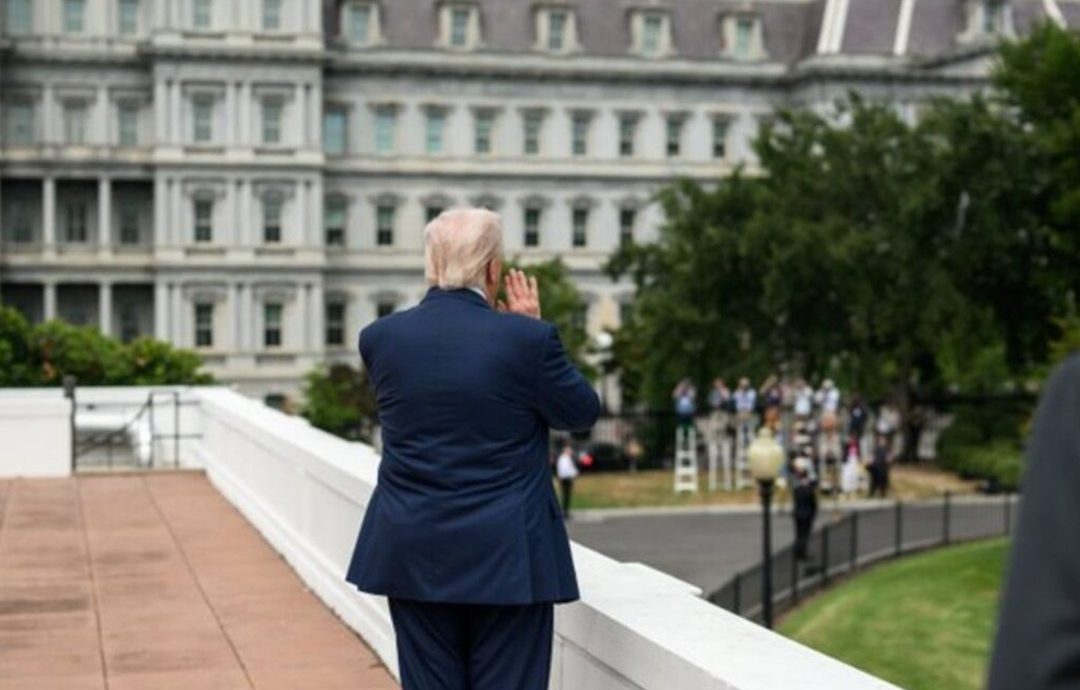The White House is about to undergo its most dramatic upgrade in decades. But few expected the announcement to come from the rooftop.
On Tuesday, President Donald J. Trump surprised reporters by speaking directly from the roof of the executive residence. Behind him stood a broad expanse of the White House lawn. Soon, that space will transform. Trump revealed a plan that combines bold architecture with personal investment—and he’s footing the bill himself.
That’s right. The new $200 million State Ballroom will be funded entirely by Trump’s private wealth. No taxpayer dollars. No government funding. Just one man’s commitment to leaving a legacy—for the presidency, and for the American people.
So why a ballroom? And why now?
For over 150 years, presidents and staff have struggled with the limitations of the White House’s event spaces. The East Room, the current largest indoor venue, only holds 200 guests. That number simply doesn’t cut it for modern state functions.
Ceremonial events, large-scale press briefings, and diplomatic receptions have all faced the same challenge: limited room. That’s why, for decades, administrations have resorted to outdoor tents. According to the White House, those tents are not only unsightly but also located over 100 yards from the main entrance—hardly ideal when hosting world leaders.
Trump’s answer? Build something that lasts. Build something that elevates America’s image on the global stage.
Speaking from the roof, Trump made his intentions clear:
“More ways to spend my money. We’ll show you. It’s just another way to spend my money for the country.”
And this isn’t the first time he’s done it.
During his first term, Trump donated his presidential salary to various federal agencies. He’s now continuing that approach in his second term—with even greater scale.
The new ballroom will be massive. At 90,000 square feet, it dwarfs any existing White House space. It will feature classic architectural styles, preserving the historic elegance of the estate. With seating for 650 guests, it more than triples current capacity.
But the project is not just about grandeur.
It’s about practicality. Functionality. Diplomacy.
Foreign heads of state will now have a dedicated, elegant space worthy of international protocol. Military award ceremonies, official receptions, and national celebrations will finally have a home indoors—no tents, no temporary setups, no compromises.
Of course, some critics may raise eyebrows at the scale. But others see this as yet another example of Trump doing what few others would. Using personal wealth, not public resources. Solving a real problem with a long-term solution.
The White House has stated clearly: this project will benefit not only the current administration but also every future president.
That message isn’t lost on those watching. In an age where many criticize Washington for overreach and excess, Trump’s gesture is—at the very least—unusual. Rarely do politicians invest their own money into the infrastructure of government.
And perhaps that’s part of the story.
The new ballroom isn’t just bricks and mortar. It’s symbolism. It’s a statement about legacy, about what kind of leadership people expect, and about how problems—big or small—can be tackled without burdening the taxpayer.
In the end, it might not be the most controversial or world-shaking development of his presidency. But it’s certainly one of the most unique. Few leaders take the podium on the White House rooftop. Fewer still make multi-million dollar announcements while standing there.
Yet that’s exactly what happened.
And whether you support Trump or not, the impact of this project is likely to be felt for decades. As visiting leaders step into the new State Ballroom, the U.S. will present a renewed image of elegance, strength, and hospitality—on American terms, and with private funding.
In an age of political noise, sometimes it’s what you build that speaks the loudest.

Emily Johnson is a critically acclaimed essayist and novelist known for her thought-provoking works centered on feminism, women’s rights, and modern relationships. Born and raised in Portland, Oregon, Emily grew up with a deep love of books, often spending her afternoons at her local library. She went on to study literature and gender studies at UCLA, where she became deeply involved in activism and began publishing essays in campus journals. Her debut essay collection, Voices Unbound, struck a chord with readers nationwide for its fearless exploration of gender dynamics, identity, and the challenges faced by women in contemporary society. Emily later transitioned into fiction, writing novels that balance compelling storytelling with social commentary. Her protagonists are often strong, multidimensional women navigating love, ambition, and the struggles of everyday life, making her a favorite among readers who crave authentic, relatable narratives. Critics praise her ability to merge personal intimacy with universal themes. Off the page, Emily is an advocate for women in publishing, leading workshops that encourage young female writers to embrace their voices. She lives in Seattle with her partner and two rescue cats, where she continues to write, teach, and inspire a new generation of storytellers.









